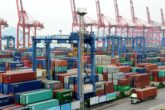June 13, 2016
The Promise of Unmanned Systems in the Asia Pacific
In this paper, CNAS Associate Fellow Kelley Sayler analyzes the proliferation of unmanned systems—particularly UAVs—within the framework of the increasingly contentious issue of area-denial/anti-access weapon systems in the Asia-Pacific generally, and in China’s near-abroad specifically. Contending that current UAV platforms are inadequate against well-equipped militaries (as opposed to nonstate actors), Sayler overviews development programs and emerging technologies that would benefit the United States both as standalone elements, and as a means to enhance legacy systems for the changing threat environment. Sayler concludes that current restrictions on exports of armed and/or stealthy UAVs degrade the capacity of even trusted allies to share the burden of wartime ISR capability in the Asia-Pacific and thus simplifies potential enemies’ targeting calculus.
More from CNAS
-
Global Leaders Condemn Pahalgam Terror Attack
In the wake of the Pahalgam terror attacks, global leaders, including Trump and Macron, condemned the violence and expressed solidarity with India. As calls for justice grow, ...
By Lisa Curtis
-
Ziemba: Struck By Energy Deal Between India & Saudi Arabia
Saudi Arabia and India have agreed to deepen energy ties and cooperate more closely on tourism and technology as the countries seek to strengthen relations at a time of turbul...
By Rachel Ziemba
-
Trump’s Crackdown on Foreign Students Is a Gift to China
When top global talent no longer sees America as a stable, long-term bet — in light of both visa and research funding insecurity — many will vote with their feet....
By Jordan Schneider
-
Trump Administration Realises That The Tariff Strategy Has Backfired: Lisa Curtis
Trump administration realises that the tariff strategy has backfired, says Lisa Curtis, senior fellow and program director at the Center for a New American Security.Watch the ...
By Lisa Curtis





